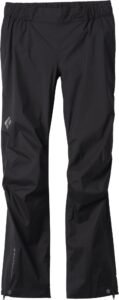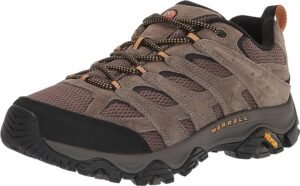
We have all seen the David Attenborough documentaries on Antarctica. Thousands and thousands of Emperor penguins huddling in a big circle to try to stay warm in over 100 knot winds. Thankfully this is not what you will experience on your Expedition Cruise to the white continent. Antarctica is a breath taking and awe-inspiring land, however those among us that are lucky enough to travel there do so in their summer time.
Expedition cruises generally begin in late October, and run through to March. For optimal weather conditions, wildlife sightings and penguin chicks the peak time to travel is December and January.
Whenever you decide to visit, these are your Top 10 essentials for your packing. Choosing the right clothing and accessories will make your trip not only memorable, but you will be as comfortable as possible which will increase your enjoyment while on land and cruising in the zodiacs.

Table of Contents
ToggleInsulated Jacket:-
A high quality jacket is one of the most important items you will need while in Antarctica. You want to check for things like waterproof outer layer, a wind resistant liner is a plus, and insulation to trap in your body heat. But before you look at purchasing the ideal jacket, be sure to check with your Expedition Cruise company or your travel agent, to see if a jacket will be provided to you free of charge while onboard. The free jackets are yours to keep and take home, and they will vary from just a top waterproof layer which will need additional insulation, to a fully insulated jacket that needs only a few layers underneath.
Click on the link below to give you the best selection of all types of jackets:-

Base and Mid Layers:-
Base layers include items like thermal tops and bottoms. These are your essential first layer that will fit snugly against your skin. They will help wick away any moisture which will keep your body heat intact. Merino Wool is a popular choice, however there are also many synthetic materials that arguably work just as well. Mid layers give you an extra barrier against the extreme cold. A good choice mid layer would be a 100 or 200 weight fleece, or a fleece or down vest.
Below are some options for both base and mid layers:-

Waterproof Pants:-
Without a doubt, waterproof pants are as important as a waterproof jacket. The conditions in Antarctica in summer can be unpredictable, but even on the most perfectly sunny warm day, a splash from a wave in the zodiac can drench your lower body making it impossible to stay on land. Lots of people opt for ski pants, which work very well but some brands can be a little too bulky. We recommend you choose a high quality pair of pants that are both practical and comfortable. Pants need to be both breathable as well as highly resistant to water, snow and sleet. Ski pants are a good option if you look for the less bulky products.
Below are some of our most recommended waterproof pants:-
Insulated Boots/Footwear and socks:-
Before you dash out to buy the best waterproof and insulated footwear for your expedition – again be sure to check with your travel agent or cruise operator to see what is provided. Due to the stringent IAATO (International Associated of Antarctica Tour Operators) guidelines many of the cruiselines provide the appropriate footwear for your time on land, or provide guidance on where to hire this before you board. On our first Antarctica expedition cruise with Hurtigruten we were provided knee high rubber boots or muck boots. These were extremely warm and toasty with only 1 layer of thick socks underneath. We tried them on at the start and then kept them with us in our cabin for the duration of the voyage. While on deck, any footwear with a good grip will work in most conditions. My favourite go to are my Merrell Moab 3 shoe that I have used in Africa, Asia, Eastern Europe and South America. They are an extremely versatile shoe for anything from hiking up a mountain, walking around the Okavango Delta or walking around deck capturing amazing scenic photos.
https://www.merrell.com/US/en/moab-3/


I recommend that you have at least 2-3 different thickness of socks to try under your muck boots. Depending on the fit, you may want a thin and then thick pair, or just 1 thick pair. Having these options in your packing will ensure every step you take on land is as comfortable as possible.
https://www.rei.com/c/socks
Gloves:-
Warm and waterproof gloves is a key component of your outer wear choices for Antarctica. Not only do we recommend a thick waterproof pair for your on-ice exploration, you will most likely want a thinner pair underneath for while you are taking photos and exploring the area. Ideally if you can have the thinner pair fit underneath the thick waterproof gloves – you are winning. If not, then carry your thin gloves in a jacket pocket and swap as necessary. The thin pair will also be ideal while you are out on deck viewing the scenery and are so small they are easy to store in a pocket when not in use.
Here are some points to consider when looking for the perfect waterproof pair:-
1 – Is the outer lining fully waterproof? Materials like Gore-Tex are the most popular for waterproofing but there are many other options that will keep you dry
2 – Is there an extended cuff that covers more of your forearm? Higher gloves mean that there will be no bare skin exposed to get wet or cold in the elements. Ideally a wrist adjustment strap to tighten half way up the glove would be a bonus to make them more secure.
3 – Are they breathable? This will help with moisture building up and making your hands sweaty underneath.
4 – Do they have toggles on them to attach to your clothing. This may seem a small thing, but being able to remove the gloves and attach them to your jacket or backpack frees up your hands or jacket pockets.
And some points to consider for your thin layer:-
1 – Are they touch screen compatible? Ideally this could avoid you having to remove your gloves every time you want to take a photo.
2 – Are they warm and soft? Fleece is a nice and warm option while not being bulky at all.
3 – Are they snug fitting. This will ensure the warmth is trapped close to your skin.
4 – Do they wick moisture. Again, you want to have that moisture drawn away from your palms to ensure you are always comfortable.
Click on the links for a wide variety of styles and prices:-


Headgear and Neckwear:-
There is an old adage that says you lose up to 40% of your heat through your head. While this may not be quite true, it is important to have the right headgear and neckwear to keep you warm and protected while on the continent or peninsula. The most popular headgear ranges from insulated hats with ear flaps to a full-face balaclava. I personally recommend an insulated hat paired with a warm buff or neck gaiter. This will keep you warm in the freezing wing or sleet on the zodiac, but also provide you with options to easily remove when you are hiking around on land and start to get too warm. Merino wool is a popular choice for its natural insulation as well as moisture wicking abilities for your neck wear, but any synthetic material will also work. A warm and lightweight beanie for a backup option is also welcome for onboard when you are in the wind on deck viewing the wildlife and birdlife. Your beanie can also be used for those sunny warmer days on land instead of the hat with ear flaps. I like the gaiters as they can be pulled up to cover your mouth and nose or left to cover your throat and neck for added warmth.
Here are some more links to help you in your search:-



Sunglasses/Goggles:-
A good pair of polarized sunglasses or goggles can make the world of difference to your outdoor adventures. By all means take your own sunglasses from home, but I do recommend attaching a cord so that you can let them dangle around your neck for convenience. Ideally you want 100% UV protection, polarized lenses, and most important ensure they are a good fit. For those that want that extra bit of protection ski goggles are the best option. Goggles may take a few pairs to get the fit exactly right. You want to look for a comfortable adjustable strap, full eye coverage, of course high UV protection and polarized lenses. While goggles are not entirely necessary is most situations, those that had them in high wind on the zodiacs definitely had the advantage over just sunglasses. You will notice many of the zodiac drivers have heavy duty goggles to keep them protected for the day.
Links for recommend products are:-

Sunscreen/Lip Balm:-
It will not come as a surprise that sunscreen and lip balm are crucial in the highly reflective Antarctica environment. The UV radiation is very intense in this part of the world also, and so taking extra steps to protect yourself is essential. You may be surprised how quickly the wind will strip away moisture from your skin. Even back onboard the ship the air is so dry and humidity so low you will want to keep moisturising your skin and reapplying lip balm often. Sunscreen should be used multiple times a day when venturing to shore or out on a zodiac ride. For sunscreen, as always look for a high SPF level, non-greasy and lightweight formula. Lip Balms should also ideally have a SPF included in the ingredients, and you will want to try a few before you find the right one for you.
If you don’t have these items suitable at home, you can try these links to top up:-

Backpack:-
Some people find that they do not need a backpack while going to shore in Antarctica and others like to have some extra storage for camera lenses, spare cameras and a place to put some layers. I would recommend that you try a backpack on your first shore visit and find out what suits you. I had a camera case with a strap around my neck and my iPhone fitted neatly in a spare pocket. I also had room for my fleece gloves, a Chapstick, my sunnies (sunglasses) and a few tissues. However, when it started to get a little warm, the only option was to start unzipping with nowhere to put extra layers.
You will want at the very least a water-resistant backpack, ideally waterproof. Our first trip to shore was in light sleet and wind, and the return journey had water splashing up on some of us from the zodiac. So that extra layer of protection (especially if you have spare cameras) was very welcome. Remember you are not allowed to place anything on the ground while on Antarctica except for the bottom of your boots and walking poles. So, any backpack that you carry should be small and light.
When looking for the ideal size, I would recommend a small daypack:-
Seasickness Medication:-
Seasickness affects individuals in many different ways. The majority of travellers that sail to Antarctica will most likely feel some effects of the ocean swells. The highest recommendation I can offer is for you to pay for a visit to a specialised travel doctor. They can advise you on the best medications suited for you. There is a large array of options from a patch that you wear for up to 3 days, to pills, wafers under the tongue and even bands you wear on your wrist. If a travel doctor is not an option, then your normal GP will also know your medical history and will be able to recommend or prescribe the right medications for you. Of course, there is usually a doctor or medical facility onboard and limited medications available if the swells catch you off guard for the first time in your life. If the risk of seasickness is the only thing holding you back from an unimaginable trip of a lifetime, I would say take the plunge. You will not regret it!


